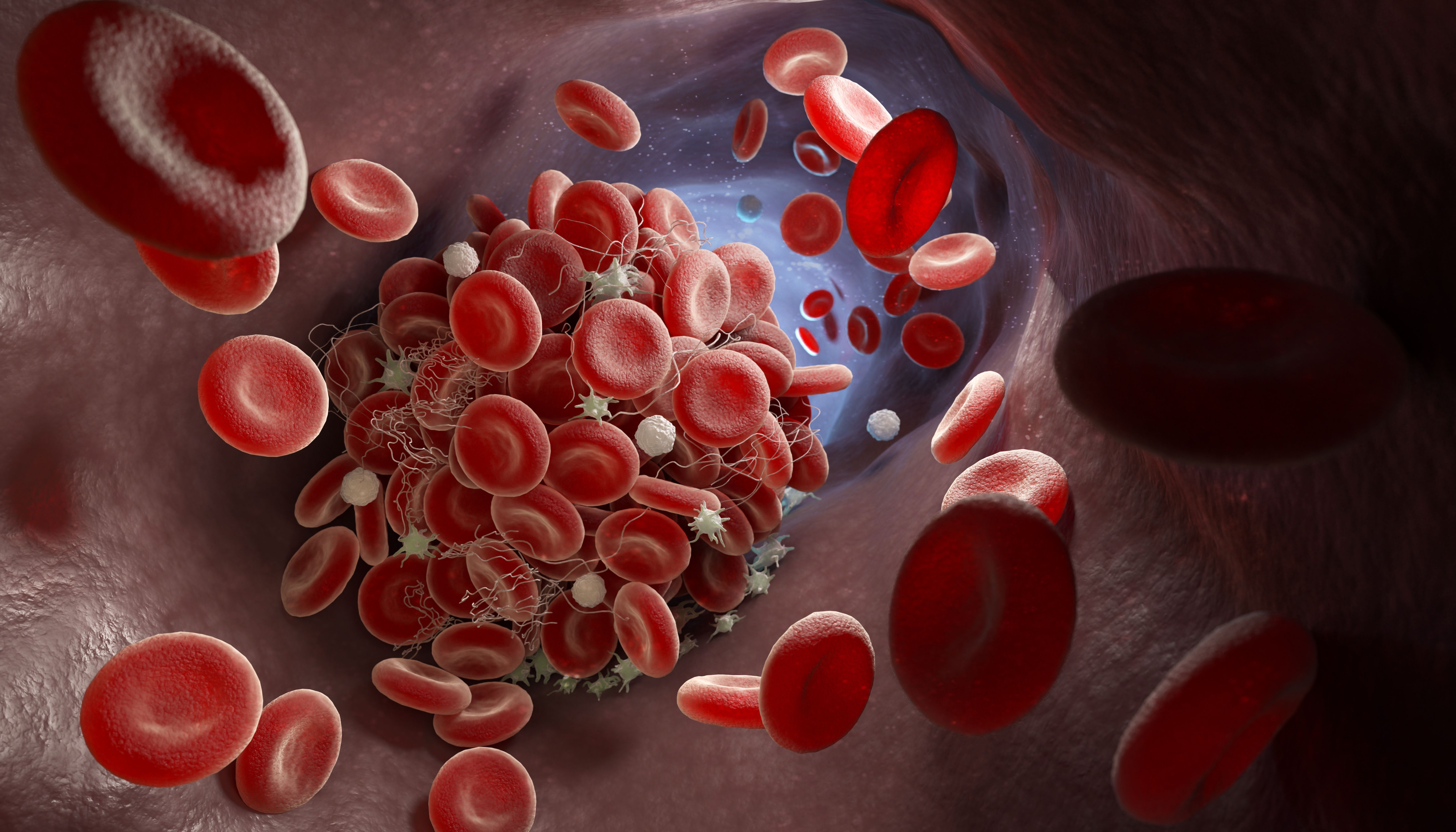Article
Small Percentage With Myelofibrosis Develop Aggressive Lymphoma from JAK Inhibition
Author(s):
While JAK inhibitors have proven to be an effective treatment for patients with myelofibrosis, a type of myeloproliferative neoplasm (MPN), they may come with a severe downside – in particular, a 16-fold increase in the chance of developing a B-cell lymphoma, according to recent research published in the journal Blood.
While JAK inhibitors have proven to be an effective treatment for patients with myelofibrosis, a type of myeloproliferative neoplasm (MPN), they may come with a severe downside — in particular, a 16-fold increase in the chance of developing a B-cell lymphoma, according to recent research published in the journal Blood.
“Many patients profit from this treatment and survive with good quality of life. Therefore, it is important to study potential long-term side effects of this therapy,” study author Ulrich Jager, M.D., head of the Division of Hematology and Haemostaseology at the Medical University of Vienna in Austria, said in an interview with CURE.
Researchers examined 626 patients with MPNs who were diagnosed and treated at the Medical University of Vienna between the years of 1997 and 2016. Of these patients, 69 with myelofibrosis were treated with a JAK1/2 inhibitor for lymphoma development, which included Jakafi (ruxolitinib), gandotinib, fedratinib or momelotinib.
Four of these patients (5.8 percent) developed a B-cell lymphoma compared to only two patients (less than 1 percent) who were not treated with a JAK inhibitor.
In a similar assessment of 929 patients with MPNs, including 216 myelofibrosis cases, three (9.7 percent) of 31 patients treated with JAK1/2 inhibition developed a lymphoma compared to one patient (0.54 percent) in the control group.
“We conclude that JAK/STAT1 pathway inhibition in myelofibrosis is associated with an elevated frequency of aggressive B-cell lymphomas,” the researchers wrote. “’Detection of a pre-existing B-cell clone may identify individuals at risk.”
The JAK/STAT pathway includes a chain interaction of proteins that signals cell proliferation and can lead to tumor formation when individuals have a mutation in the JAK2 V617F protein. This is why the development and eventual approval of Jakafi was such a major breakthrough in this field. However, the JAK/STAT pathway can also play a role in the development of malignant lymphoma.
The lymphomas that arose in the study included diffuse large B-cell lymphoma (DLBCL) and high-grade B-cell lymphoma not otherwise specified.
“Recent reports point toward a slightly increased risk of lymphoid neoplasms in MPN patients with JAK2 V617F mutations. Moreover, sporadic cases of aggressive lymphomas have been reported in patients with MPN under ruxolitinib treatment,” the researchers wrote, noting that the frequency and definitive causes of lymphomas under the JAK2 inhibition remain unclear.
But what they do know is that about 16 percent of patients with myelofibrosis have dormant lymphoma cells in their bone marrow, and being treated with a JAK inhibitor might bring that disease to light.
“Currently, we suggest that these patients may be at risk and should get special attention when taking JAK inhibitors, but we do not see this as an absolute contraindication,” Jager said. “If possible, alternative treatments should be considered.”
Incyte, the manufacturer of Jakafi, offered a statment stating that in a large study, they found no correlation at all between their drug and aggressive lymphoma.
"We are aware of a recent analysis published in Blood reviewing the development of aggressive B-cell lymphomas among patients treated with JAK1/2 inhibitors, including ruxolitinib, for a rare group of blood cancers known as a myeloproliferative neoplasms (MPNs). The safety of the patients who use our medicines is a top priority at Incyte. We have robust safety monitoring programs in place such as routine pharmacovigilance activities in the form of periodic benefit-risk evaluation reports, risk management plans and ongoing signal detection activities to identify potential adverse events among patients treated with ruxolitinib.
An extensive review of the ruxolitinib global safety database, which includes nearly 80,000 patient years, does not reveal an association between ruxolitinib therapy and lymphomas. We are continuing to evaluate the analysis, but would note that the analysis was not adequately controlled and did not account for factors such as prior treatment exposure, time since MPN diagnosis, or the point at which the JAK1/2 inhibitors were initiated in the patients’ disease course.
MPNs are complicated malignancies. Compared to the general population, people with MPNs are at an increased risk of developing lymphomas. Our ongoing and robust global safety monitoring and adverse event reporting continues for ruxolitinib," Incyte said in the statement.
To better understand the potential correlation between JAK inhibition and lymphoma, Jager said that prospective evaluation of this data in larger clinical trials is needed. He also suggested that his colleagues in the hematology/oncology space should report when their patients who are treated with JAK inhibitor therapy go on to develop lymphoma.
“The increased risk of lymphoma should be considered when prescribing the drug. Awareness of potential side effects will lead to safer use of JAK1/2 inhibitors,” Jager said.




